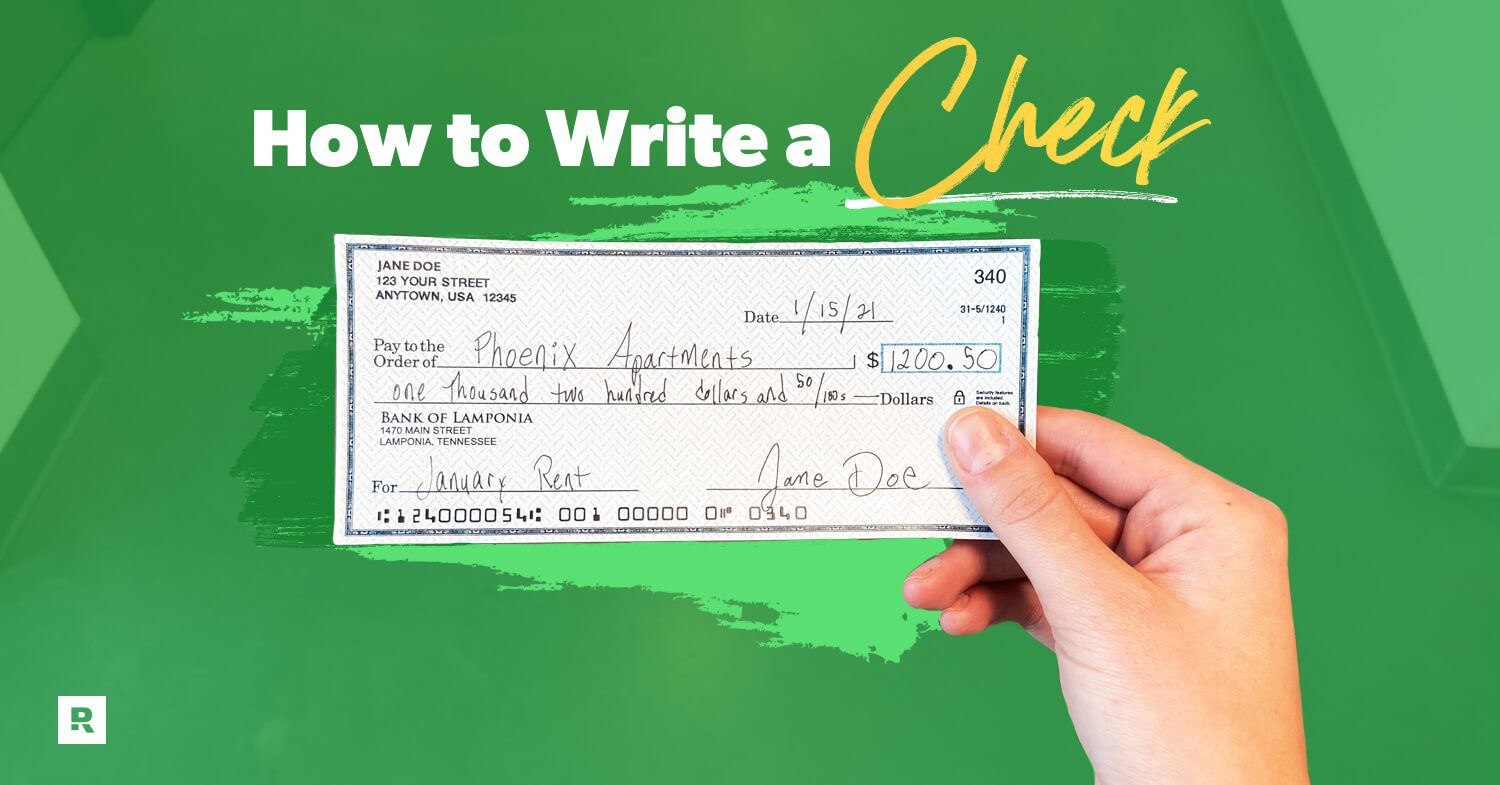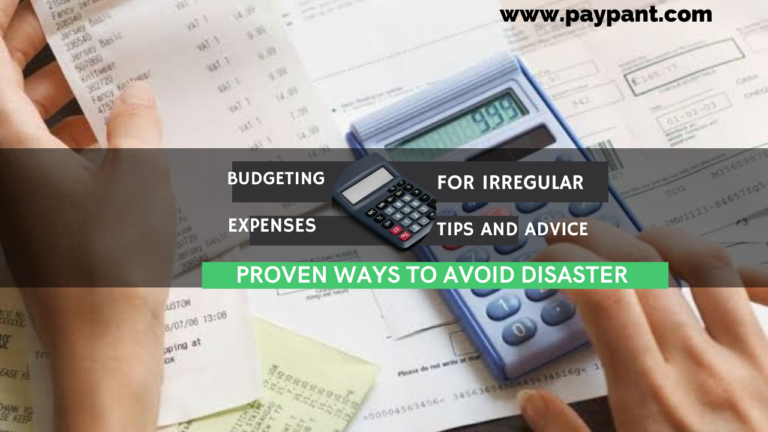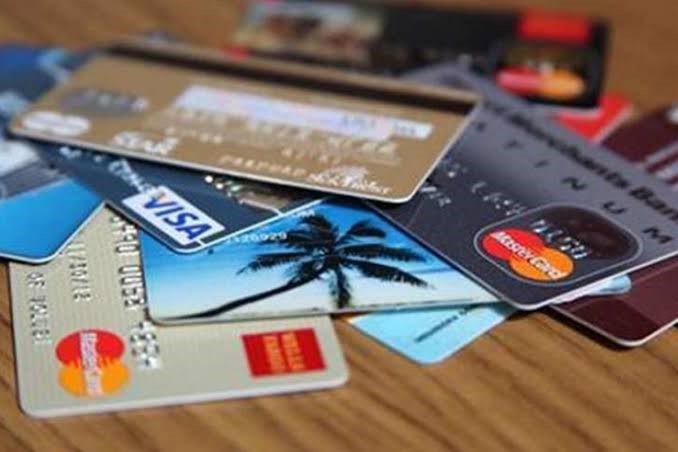Last updated Jan. 29, 2023 by Okechukwu Nkemdirim

Think checks are extinct? You’ll be surprised to know they’re still in use despite today’s digital advancements. Even though they aren’t ordinary and you’ve probably never used them before, they remain an effective and inexpensive tool for moving money.
It’s easy to write a check; however, making a mistake or omitting any vital information can cost you. How can you write a check to avoid mistakes? The recommended movement of filling a check is from top to bottom, which reduces the chance of skipping any part. In this How to Write a Check- Step by Step Guide article, you will understand everything you need to know about writing a check.
What are the Different Parts of a Check?
A standard check can be divided into essential parts, including your information, check number, date, the recipient’s name, the payment amount, memo line, bank name, routing and account number, and signature.
The rest of this article will show you how to fill out the different parts of a check and provide some tips for using checks safely.
Below is an example of a standard check.

Detailed Explanation on How to Write a Check
1. Date
This step is simple. You’ll mostly find a space for the date at the top right corner of the check, and you’re expected to fill in the date when signing the check.
There’s no restriction against writing a future date as it does not affect the check, and the check is only valid as a legal tender when signed.
Example: “March 14, 2022”
2. Name
Writing the name of the person receiving the payment is the next logical step. It could be the name of an individual, a business (corporation), a trust, a school, or any other entity with a bank account.
Ensure the name is written correctly and legibly. However, most banks will give you some wiggle room on abbreviations, nicknames, and spelling.
Example: “Michael Anderson”
3. Value (in numbers)
On the right side of the check, you’ll find a place where you’re requested to input the cash value (in numbers) you wish the recipient to receive. Ensure to write the total amount in dollars and cents and use numbers only.
Example: “$55,200.60”
4. Value (in words)
You can choose to write the value in words first or otherwise, whichever is easier for you. Look at the value you wrote in numbers and write it out in words in the given space. Note that you’re expected to write the dollar amount in words except for the cents, which you can write numerically.
Example: “Fifty-five thousand, two hundred dollars and 60 cents”
Alternately: “Fifty-five thousand, two hundred dollars and 60/100 dollars.”
5. Signature
This stage is the final step to completing a check and making it valid. Only sign the check after you’ve double-checked everything. Use the signature you would any other legal document. The majority of checks usually have a line designated for signature.
Example: “/SIGNATURE/”
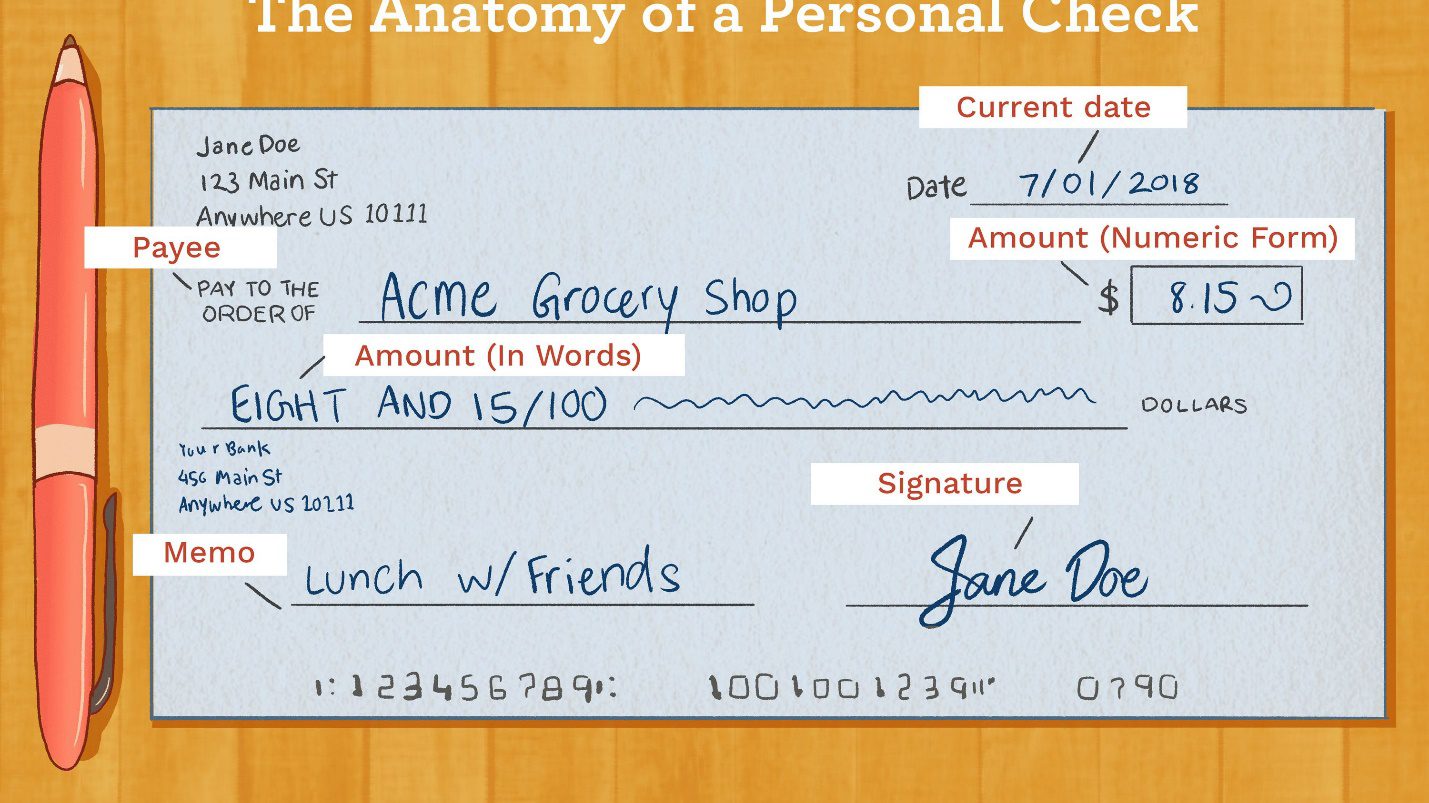
6. Memo
This step is optional and can be skipped. You can include any other information you like here, such as the purpose of the payment. The memo is usually a small excess space in the bottom left corner of the check.
Example: “March Rent Payment”
Keeping a Record of Your Checks
In how to write a check, keep a record of the transaction in your checkbook after completing your check. Having a copy of everything on your check will help you figure out what occurred later. Some of the benefits of recording every check you write in a check register include:
- It enables you to track your spending to avoid bounced checks.
- It allows you to see where your money goes. While you’ll be able to see a check number and amount on your bank statement, there’s no indication of who you wrote the check.
When you’re collecting your checkbook, request a check register as well. Alternatively, you can use a spreadsheet or paper to record your checks.
The essential information you should record from your check is:
- The check number
- The date that you wrote the check
- A description of the transaction or whom you wrote the check to
- How much the payment was for
Using a check register would help you balance your checking account, and it also helps you double-check the transactions in your bank account. This way, you and your bank remain on the same page.
It’s easier to detect errors in your account from your check register. You’ll also notice if somebody failed to deposit a check you wrote, so you won’t overestimate the amount of money you have to spend.
When recording the money left, always count checks you’ve signed as money gone. Banks usually convert the paper checks to electronic checks, and the money is pulled almost instantly.
Check out these best personal loans with low-interest rates

Tips for Using a Check Securely
When you write a check, Losing the signed check is risky; Fraudsters can alter them, and you can lose your money. There are a lot of possibilities checks could go missing after leaving your hands, but you can make it difficult for thieves to use them.
The aftereffects of fraud can be disastrous, you not only lose your money, but you also have to spend time and effort cleaning up the damages left behind.
Below are some of the safety precautions you can take to mitigate the risk of your checks being compromised.
1. Make it permanent
Never use a pencil to write a check; using a pen is ideal. Using pencils makes your account vulnerable, and anyone with an eraser can easily change the amount of your check and the payee’s name.
2. No blank checks
Ensure you’ve filled out the check before signing it. Don’t grant someone unlimited access to your bank account even if you’re unsure how much something costs or who to make the check payable.
3. Keep checks from growing
When writing your check, ensure the value is written in a way someone won’t be able to add to the dollar amount. Drawing a line from the far left border of the area to the last digit is an excellent technique.
Let’s assume you want to write a check for $100.25. It’s good safety practice to place the “100” as far to the left as possible. Then draw a line from the right side of the “5” to the end of the space.
Another method is to write the numbers so big that altering them would be difficult.
4. Use Carbon copies
Checkbooks with carbon copies make it easy to record checks as your write. Some checkbooks contain a miniature sheet that creates a copy of every check you write.
5. Consistent signature
People use different signatures on credit card slips and checks. Some are written illegibly, while some look like artistic drawings. How your signature looks don’t matter, the most important thing is maintaining a single signature.
Using the same signature regularly can assist both you and your bank in detecting fraud. If a signature does not match, it will be easier to prove that you are not liable for the charges.
6. No “Cash.”
Avoid writing a check that’s payable in cash. Moving around with a bunch of money or signed blank checks is dangerous. Use an ATM or collect some money from a teller if you need money.
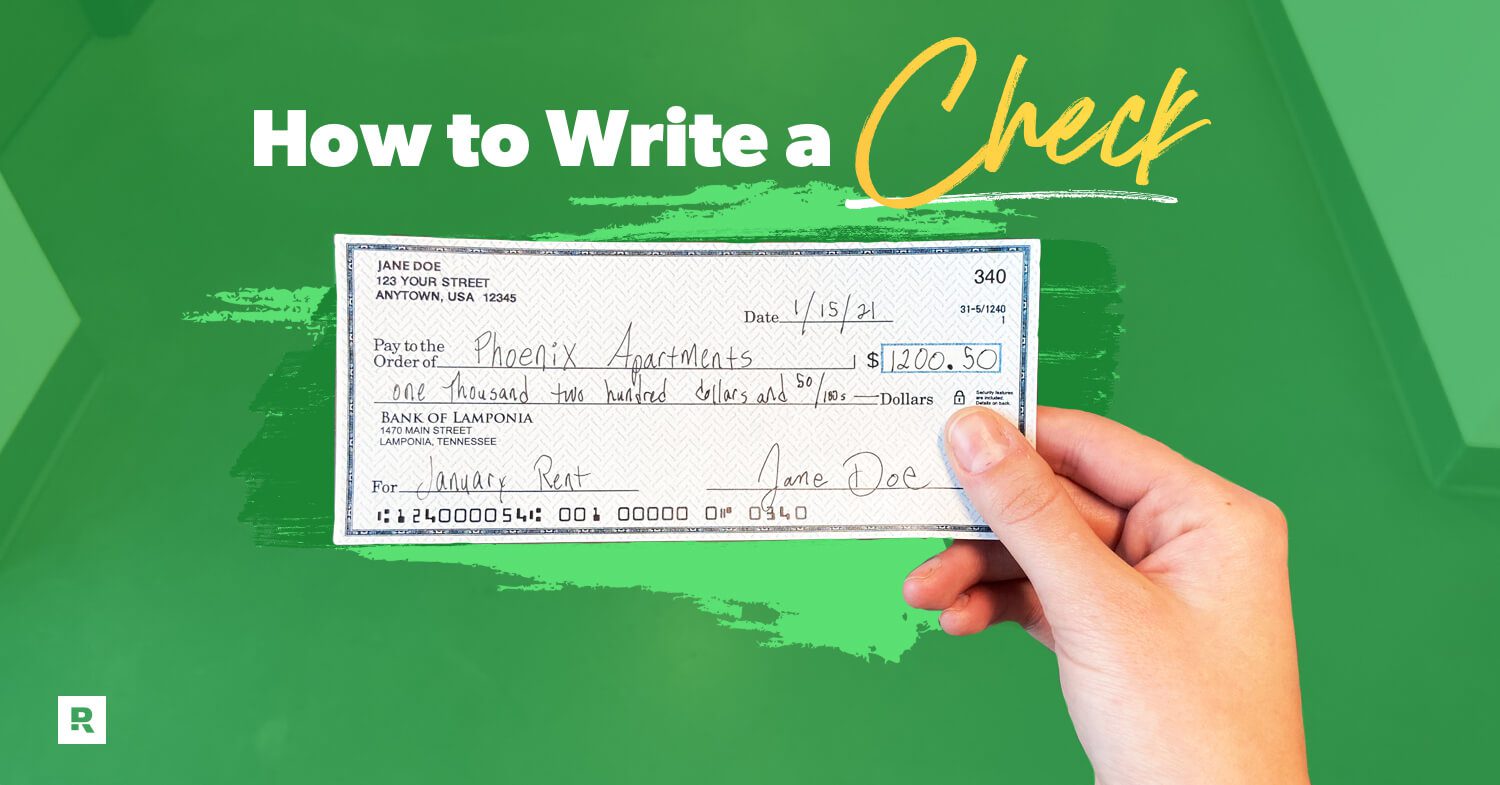
7. Write fewer checks
Using checks isn’t particularly dangerous, but safer ways to transfer funds are available. There is no paper to get lost or stolen when you make electronic payments in the first instance. If you’re avoiding technology by using checks, it’s pointless since most checks are converted to electronic payments.
Banks adopt an electronic approach to payments because tracking payees’ identification and transactions using timestamps are easier. If you want to make recurrent payments, use technologies like online bill payment. For everyday purchasing, use a credit or debit card.
Related article: Check out these 12 steps to financial freedom

Better Alternatives to a Check
Most of the time, a check might not be necessary. Checks can be inconvenient to write, and they aren’t the quickest way to transfer funds. Consider other options available that are faster, make your life easier, and save you money.
- Pay your bills online, and tell your bank to send you an account statement every month. You won’t have to write a check, pay postage, or wait for the check to arrive in the mail.
- Alternatively, you can get a debit card and use it to purchase. You’ll make a payment from the same account. You won’t have to waste checks (which you’ll have to order again), and you’ll have an electronic record of your transaction that includes the payee’s name, the date of payment, and the amount.
- Make recurring payments, such as utility bills and insurance premiums, automatic. It’s usually free to pay this way, simplifying your life. Just make sure you always have enough money in your account to pay the bill.
Keep track of your account balance and ensure funds are available before using a check or other payment methods. If you don’t, your payments may “bounce,” resulting in expensive fines and legal troubles.
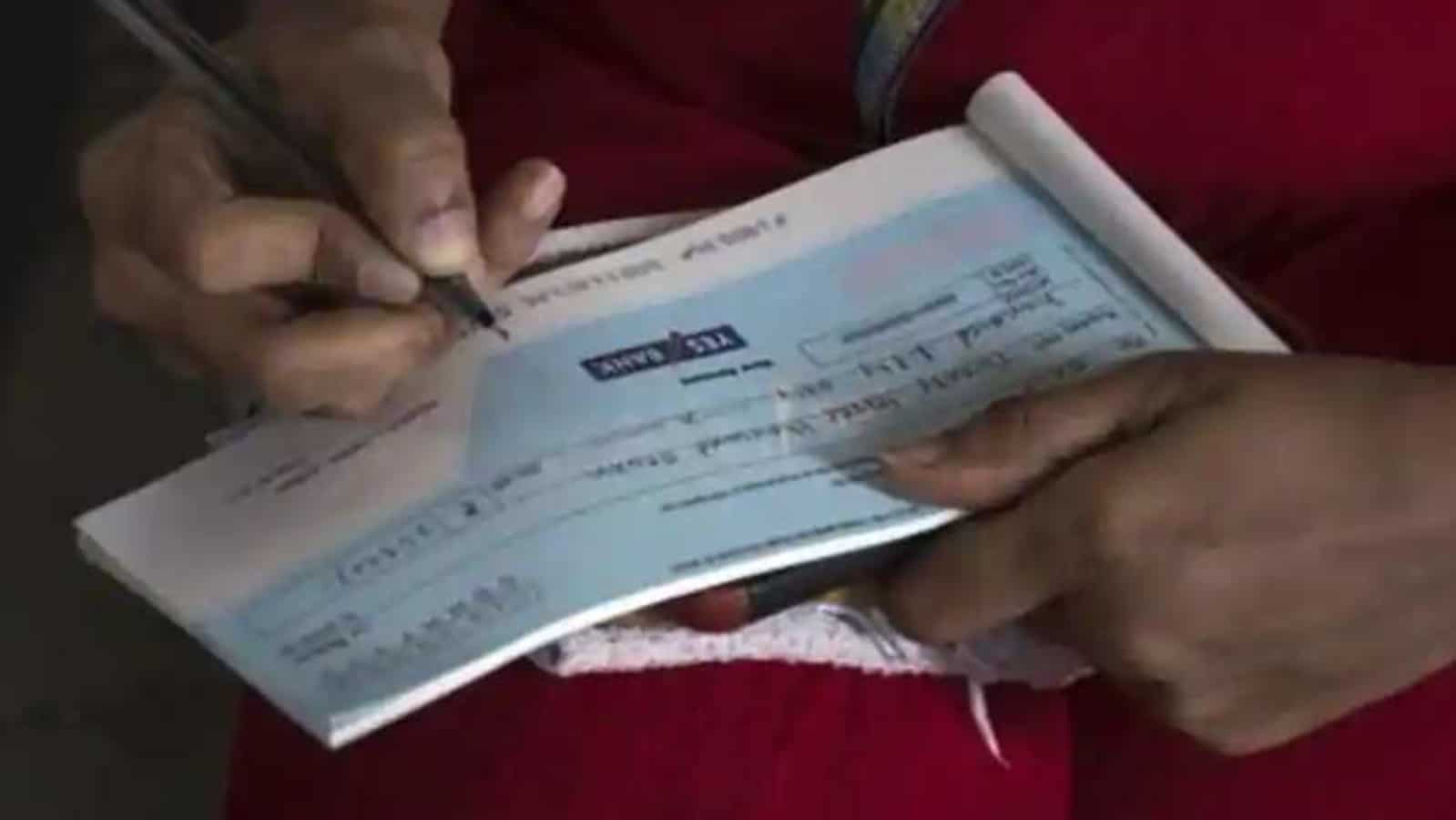
Every Time You Write a Check, Make Sure to Update Your Check Register.
In contrast to using a credit or debit card, you can write a check for money that you don’t have. As a result, it’s essential to know how much money you have available in your bank account before writing a check. You risk enraging store owners or getting charged with fraud if you don’t.
Your checkbook will always be in order if you keep track of every transaction you make on the account, whether by writing checks or using a debit or credit card.
In addition, you can keep track of your personal financial condition in real time by doing so. You can change your spending habits by looking at your bank account balance and how much money is coming in and going out.
Tips for Avoiding Check Scams on the Internet when Writing a Check
Regrettably, check fraud occurs. Credit cards and electronic transfers are more secure than checks, but if you like to use a tangible object with your name on it, there are a few things you can take to reduce the risk:
- Fraudsters may “wash” checks using an ink-eliminating solution. You can use special pens to avoid this.
- When writing a check, to prevent the check amount from being changed from, for instance, “12” to “1200,” draw a line over any remaining space on the “Pay to the order of” line. When putting the amount in numbers, start next to the dollar sign so that no one can sneak in an extra digit.
- In the event that a check has been stolen or lost in the mail, you can cancel it at your bank using its serial number. If the thief has already cashed the check, this will have no effect.
- In addition to preventing your mail from being stolen, a locked mailbox may also protect your bank statements, signature samples, and checkbooks.
- Check your bank and credit card statements regularly. Even if you discover an error in the transaction long after the fact, it will be challenging for you to get any compensation from the con artist.
Related article: Do you know the differences between a bank and a credit union? Find out here
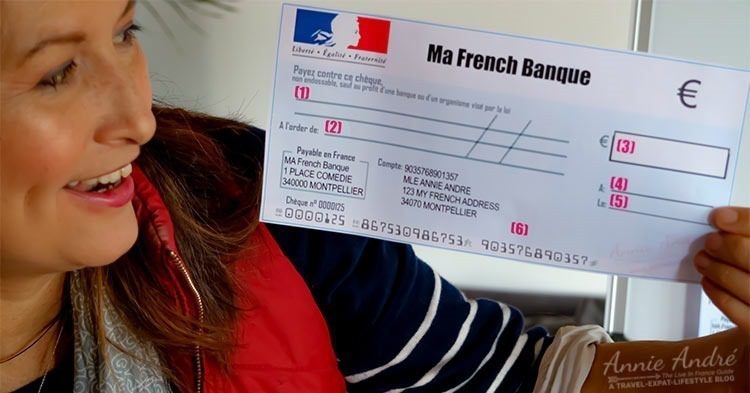
Frequently Asked Questions
The below provides answers to some related questions.
Q: Can I write a check to myself?
You can deposit a check written to yourself in an ATM, a bank branch, or your mobile banking app. When filling the check, ensure you write your name in the “Pay to the Order” section of the check.
Q: When should I sign the check?
Don’t sign checks until you’ve filled the “Pay to the Order” section and the numeric and written amount has been completed. If you sign a blank check and lose it or get stolen, your bank account is vulnerable.
Q: Is It Allowed To Use A Pencil To Write A Check?
Whether or whether you can write a check with a pencil in a pinch depends on your situation. Please do not write a check with a pencil; we don’t recommend it though it is feasible. If you’ve written something down in pencil, it’s easy for someone to erase it and erase it again. So, your signature on a few-hundred-dollar cheque may be used to alter it to tens of thousands of dollars. When writing a check, you should always use permanent ink for the best protection against fraud.
Q: What Is the Process for Adding a Date to a Check?
As we mentioned earlier, you don’t have to put the current date on your check, and Postdating indicates that you use a future date on your cheque. Because you don’t have enough money in your bank account to handle the check, this is the most common reason why this happens. When you postdate a check, you have more time to deposit additional cash into your bank account to settle the bill.
While it is possible to postdate checks when you write a check, it is usually a bad idea and should be avoided. A postdated check is a clue that you’re not handling your money properly or overspending. It’s also possible that you’ll run into problems like returned check fees if your payees don’t take postdated checks.
Q: In the event that a mistake is made when writing a check, what happens?
While it is crucial to avoid errors whenever possible when writing a check, check-writing mistakes such as omitting to sign, setting the wrong date, or inputting incorrect word and number amounts are prevalent. You could lose money if an error on your check stops or slows its processing.
Returned check fees, late fees, and other charges may apply if your bank or business cannot process the payment.
Q: What Is The Proper Form To Use When Writing A Voided Check?
A business or your employer may require a cancelled check to execute direct withdrawals, direct deposits, automatic bill payments, and other transactions. This cancellation ensures that they access the relevant accounts and that the transaction can be completed without errors.
In how to write a check, the check can be voided in minutes, and “VOID” is all that’s required. You can also write void across the check as many times as necessary to ensure that this is no longer a valid check. Once a check has been voided for any reason other than a typo, shred or tear it up.
Q: How Often Should I Use a Checkbook/How Often Should I write a Check?
You may or may not be required to pay with a check in today’s society. Personal checks are the only payment method accepted by some businesses that do not accept credit or debit cards.
Paying using a check can save you money in some circumstances. Paying with a personal check may result in a discount because businesses must pay a fee to process debit or credit card payments. If you’re making a significant purchase, this may add up to a few hundred dollars in savings. Some credit cards provide reward points, but you’ll need to spend a lot of money before getting your money’s worth.

